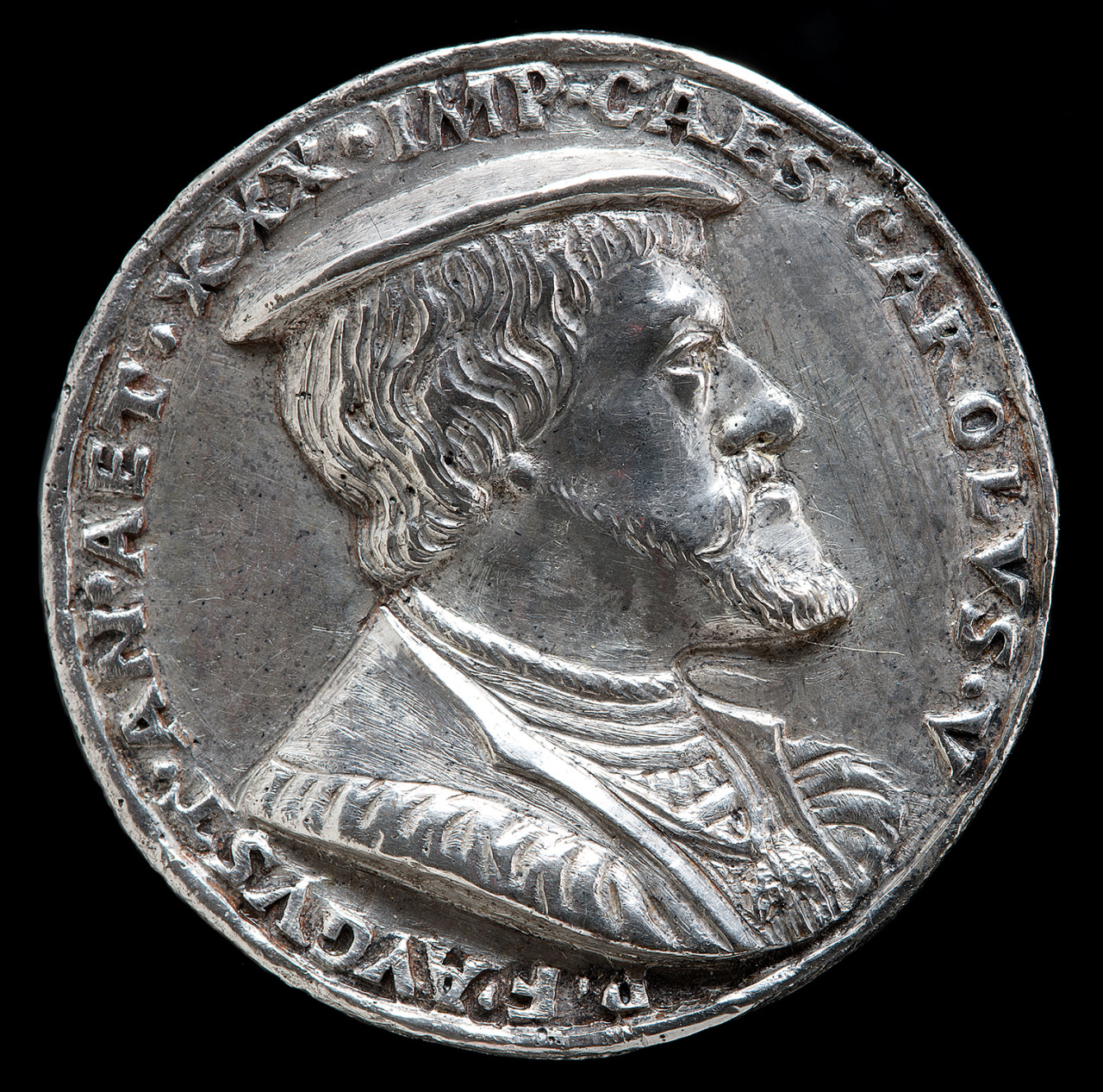The Blanton Museum of Art brought to Austin (October 5, 2013 – January 5, 2014) a selection of works from Augsburg, a wealthy German city and center of trade known for its innovative printmaking techniques and its important role in the spread of Renaissance ideas from Italy. It is the first exhibition in the United States to focus on Augsburg’s artistic achievements in the late fifteenth and early sixteenth centuries, and works to advance the scholarship of one of Germany’s oldest cities whose rich Renaissance heritage has long been eclipsed.
The exhibition was organized by the National Gallery of Art in Washington, D.C. and supplemented with loans from The Metropolitan Museum of Art, the Library of Congress, and other private and public collections.
Emphasizing the rich tradition of paper and metal works produced in Augsburg spanning 1475-1540, the exhibition reveals how, through its commercial ties to Italy, Augsburg was one of the first German cities to emulate the Italian Renaissance style as well as its cultivation of humanism and revival of antiquity. It also examines the fundamental role of imperial patronage in establishing the city’s thriving art market.
Situated in southwest Bavaria along the Alpine pass into Italy, Augsburg was founded as a Roman military fortress in 15 BCE by Emperor Augustus. During the reign of Holy Roman Emperor Maximilian I (1459-1519), Augsburg became the location of the Imperial Diet, a regular assemblage of rulers under the authority of the emperor. The patronage of the Habsburg Court and the rise of wealthy banking houses fostered a thriving environment with a diverse artistic community generating a prosperous center of manufacturing, printing, and armory production.
In a rare viewing opportunity, the exhibition will feature over 100 works of art including prints and drawings by Daniel Hopfer, Erhard Ratdolt, Hans Burgkmair and others focusing on religious and secular life in Augsburg during the onset of the Protestant Reformation. Emphasis is placed on the examination of new printing techniques born out of Augsburg. Color printing was pioneered by Augsburg native Erhard Ratdolt (1447–1528), and further developed by Hans Burgkmair (1472-1531) and Jost de Negker (1485-1544).
Featured in the exhibition was an impression of Ratdolt’s Christ on the Cross with the Virgin and Saint John:

Erhard Ratdolt (printer) (German
[Augsburg], Fifteenth Century), “Christ on the Cross with the Virgin and
Saint John,” 1491, color woodcut printed in black, red, blue, brown,
olive and yellow and hand colored in blue, pinkish-beige and some
touches of red; on vellum. National Gallery of Art, Washington, D.C.
the earliest extant, multi-figured, color-printed woodcut in the Western world printed with six distinct colors. New scholarship reveals that etching as a printing technique was first explored in Augsburg by armor etcher, Daniel Hopfer (c. 1470-1536). His detailed church interiors and intimate depictions of the Holy family uncover his advanced experimentations with etching on iron plates.
Important works by artists such as Albrecht Dürer, Hans Holbein the Elder, and Leonhard Beck were also on view.
Alongside works on paper, the exhibition ncluded a 16th century suit of armor etched in the manner of Daniel Hopfer to exemplify the close connection between armor etchers and printmakers. A style of armor, often identified with Emperor Maximilian I, characterized by elaborate fluting and etching became popular during the later half of his reign. A helmet forged in Augsburg in this style, decorated with Italianate foliage will also be on view. In addition, visitors discovered the delicate metalwork of Augsburg artists such as Matthes Gebbel and Hans Schwarz, whose silver, bronze and lead alloy coins feature idiosyncratic portraits reminiscent of those from ancient Rome.
More images from the exhibition:
Hans Burgkmair I
The Fight in the
Forest, c. 1500‐1503
Pen and black ink
on laid paper
National Gallery
of Art, Washington, Ailsa Mellon Bruce
Fund
Hans Burgkmair I
and Jost de Negker
The Lovers
Surprised by Death, 1510
Chiaroscuro
woodcut printed from 3 blocks: black line block
and 2 tone blocks
in shades of red on laid paper (early state)
National Gallery
of Art, Washington, Rosenwald Collection
Hans Burgkmair I,
Erhard Ratdolt (printer)
Saint Valentine,
Saint Stephen and Saint Maximilian, 1494 and
1498
Color woodcut
printed in black, red, yellow, blue, and olive
green on laid
paper
National Gallery
of Art, Washington, Rosenwald Collection
Albrecht Durer Emperor
Maximilian I, c. 1518
Woodcut on Laid
Paper
National Gallery
of Art, Washington, Rosenwald Collection
Matthes Gebel Emperor Charles
V, 1530
Silver
National Gallery
of Art, Washington, Samuel H. Kress Collection
Silverpoint,
brush, and black and brown ink, and black chalk
heightened with
white on white prepared paper
National Gallery of Art,
Washington, Woodner Collection
.jpg)




